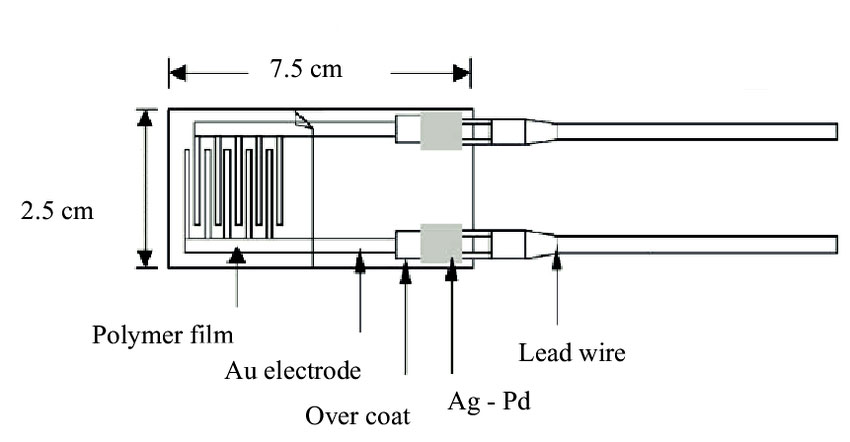A humidity sensor is an electronic device that measures the humidity in its environment and converts its findings into a corresponding electrical signal. Humidity sensors vary widely in size and functionality; some humidity sensors can be found in handheld devices (such as smartphones), while others are integrated into larger embedded systems (such as air quality monitoring systems).
There are three basic types of humidity sensors:
1. Capacitive
A capacitive humidity sensor measures relative humidity by placing a thin strip of metal oxide between two electrodes. The metal oxide’s electrical capacity changes with the atmosphere’s relative humidity.
The capacitive type sensors are linear and can measure relative humidity from 0% to 100%. The catch here is a complex circuit and regular calibration. However, for designers this a lesser hassle over precise measurement and hence these dominate atmospheric and process measurements. These are the only types of full-range relative humidity measuring devices down to 0% relative humidity. This low-temperature effect often leads to them being used over wide temperature ranges without active temperature compensation.
2. Resistive

Schematic of a resistive humidity sensor
Resistive humidity sensors utilize ions in salts to measure the electrical impedance of atoms. As humidity changes, so do the resistance of the electrodes on either side of the salt medium.
3. Thermal
Two thermal sensors conduct electricity based upon the humidity of the surrounding air. One sensor is encased in dry nitrogen while the other measures ambient air. The difference between the two measures the humidity.